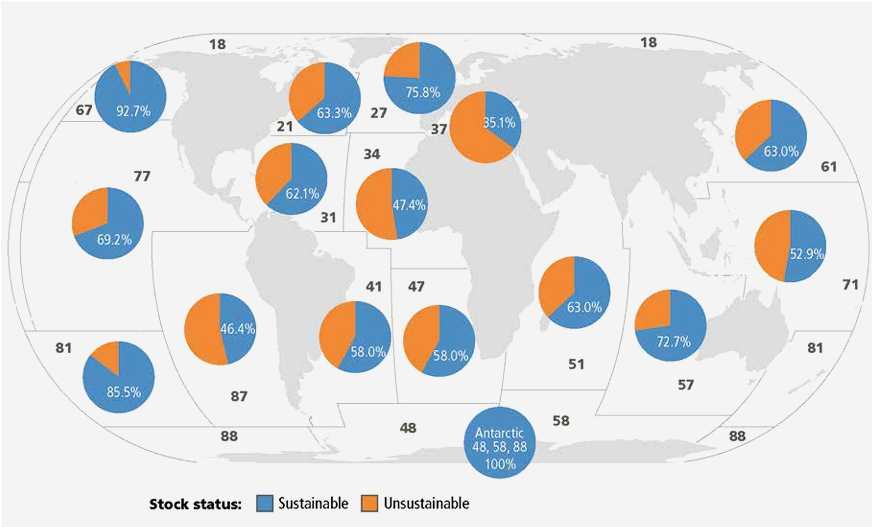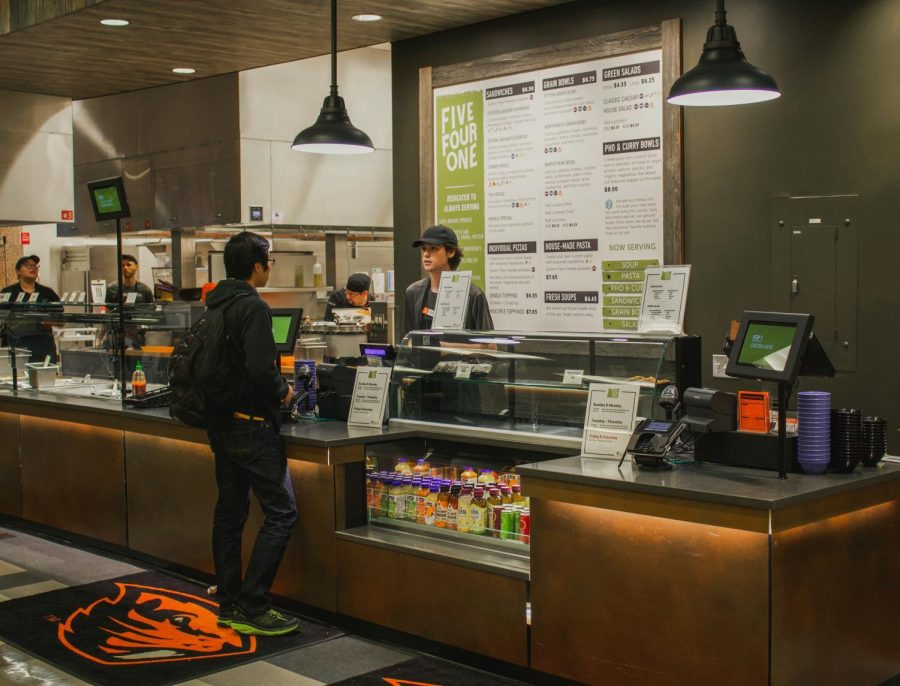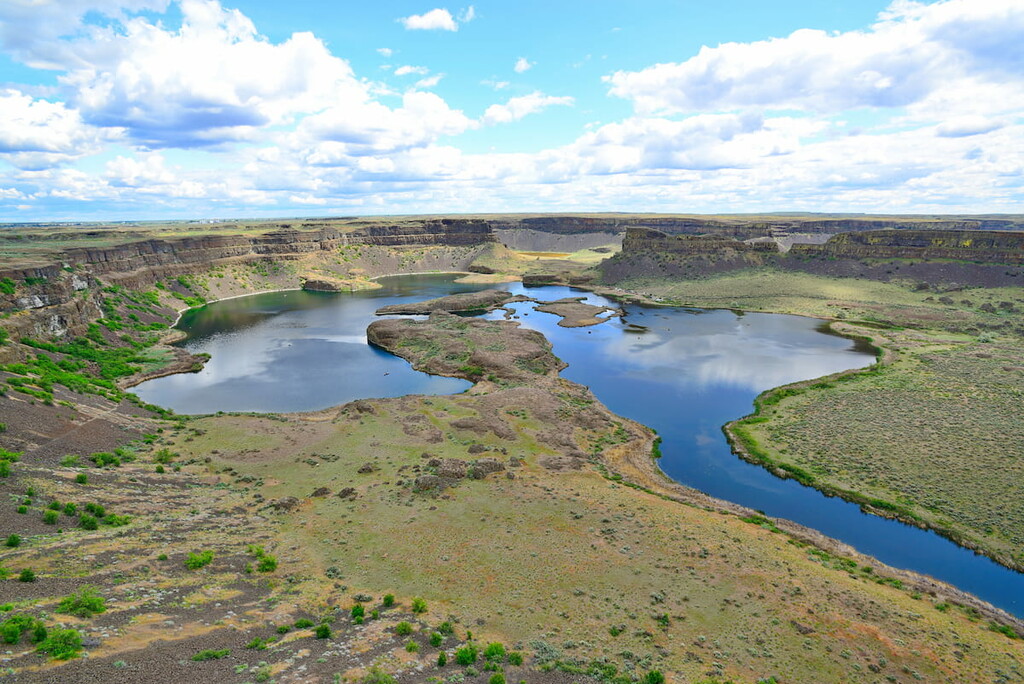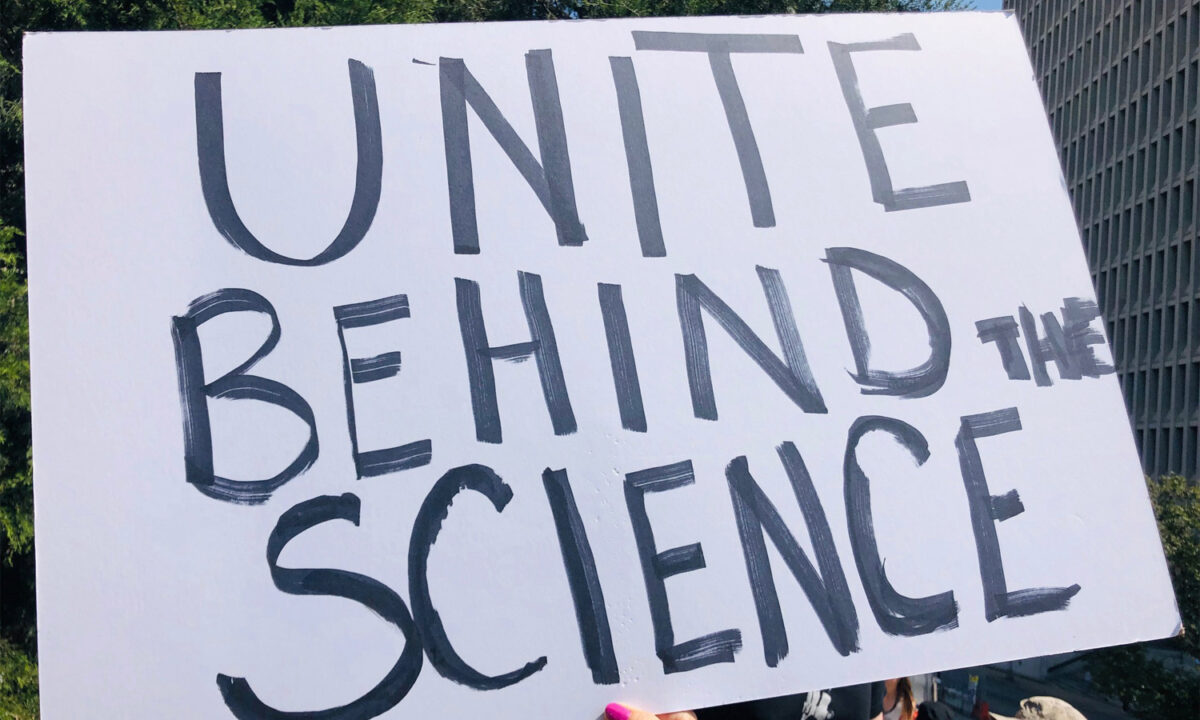To Serve or Not to Serve
Does serving wild-caught seafood on Oregon State University’s campus align with their sustainability values and should they start? When seeking an answer to this question it can be very easy to suggest that it should not be served as there are worries about overfishing and the damage it may cause to the environment. I believe that OSU should serve wild-caught seafood under specific conditions that will help monitor sustainability.
How to Serve
Overfishing is when too many fish or a stock are caught, leaving short the number of adult fish need to sustain healthy populations. The MSC international (2025) reports that this year’s report estimates nearly 36% of fish stock are fished unsustainably.

Image 1: Fishery stocks from 2021 showing the sustainable and unsustainable percentage status, Sharma et al. (2025).
If managed properly, serving wild-caught seafood would not only benefit students but would look to help create sustainability amongst fishers. According to Giron-Nava et al. (2021), even if fisheries achieved Maximum Sustainable Yield most fishers would make less than the minimum living wages. It is important to maintain sustainability amongst fish, but those who fish for our food also need to be looked at in this light. OSU can help by sourcing fisheries that support their fishers while also meeting sustainability standards. It is said that in regions where fisheries are exceptionally managed, stock abundance is improving Hilborn et al. (2020). Oremus et al. explains that a report from 2014 showed 77% of the fish stock was underfished or under-utilized. Oregon state can do its part by looking at which underfished stock and determining which stock could be utilized and served at their dining halls. The sustainable serving of seafood at OSU would also bring awareness to the fact of how important seafood is to global food security. Stated by Stetkiewicz et al. (2022), an estimated 60 million people are dependent fisheries and aquaculture for food and nutrition. Seafood is important for low-income regions of the world, and while Corvallis is not a low-income region, they can still stand to be an example for providing sustainable seafood to their community.
Served
The idea of serving wild-caught seafood in Oregon State University’s dining halls is not only possible but would be a great opportunity to show others responsible consumption. OSU can take specific measures to ensure they serve sustainable fish, sourced from sustainable fisheries, to serve an eco-friendly community.
References:
Giron‐Nava, A., Lam, V. W., Aburto‐Oropeza, O., Cheung, W. W., Halpern, B. S., Sumaila, U. R., and Cisneros‐Montemayor, A. M. (2021). “Sustainable fisheries are essential but not enough to ensure well‐being for the world’s fishers.” Fish and Fisheries, 22(4), 812–821.
Hilborn, R., Amoroso, R. O., Anderson, C. M., Baum, J. K., Branch, T. A., Costello, C., de Moor, C. L., Faraj, A., Hively, D., Jensen, O. P., Kurota, H., Little, L. R., Mace, P., McClanahan, T., Melnychuk, M. C., Minto, C., Osio, G. C., Parma, A. M., Pons, M., Segurado, S., Szuwalski, C. S., Wilson, J. R., and Ye, Y. (2020). “Effective fisheries management instrumental in improving fish stock status.” Proceedings of the National Academy of Sciences, 117(4), 2218–2224.
Oremus, K. L., Frank, E. G., Adelman, J. J., Cruz, S., Herndon, J., Sewell, B., and Suatoni, L. (2023). “Underfished or unwanted?” Science, 380(6645), 585–588.
Sharma, R., Barange, M., Agostini, V., Barros, P., Gutierrez, N.L., Vasconcellos, M., Fernandez Reguera, D., Tiffay, C., & Levontin, P.,
eds. 2025. Review of the state of world marine fishery resources – 2025. FAO Fisheries and Aquaculture Technical Paper, No. 721.
Rome. FAO.
Stetkiewicz, S., Norman, R. A., Allison, E. H., Andrew, N. L., Ara, G., Banner-Stevens, G., Belton, B., Beveridge, M., Bogard, J. R., Bush, S. R., Coffee, P., Crumlish, M., Edwards, P., Eltholth, M., Falconer, L., Ferreira, J. G., Garrett, A., Gatward, I., Islam, F. U., Kaminski, A. M., Kjellevold, M., Kruijssen, F., Leschen, W., Mamun, A.-A., McAdam, B., Newton, R., Krogh-Poulsen, B., Pounds, A., Richardson, B., Roos, N., Röös, E., Schapper, A., Spence-McConnell, T., Suri, S. K., Thilsted, S. H., Thompson, K. D., Tlusty, M. F., Troell, M. F., Vignola, R., Young, J. A., Zhang, W., and Little, D. C. (2022). “Seafood in food security: A call for bridging the terrestrial-aquatic divide.” Frontiers in Sustainable Food Systems, 5.
“What is overfishing.” (n.d.). MSC International, <https://www.msc.org/what-we-are-doing/oceans-at-risk/overfishing> (Jul. 20, 2025).


